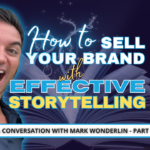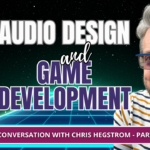Why Podcast Sound Quality Matters and How to Improve Yours: A Conversation with Chris Stone – Part 1 “An intro video needs to let people know, ‘Hey, this is who the show’s for, and this is what you’re about to see, what you’re about to witness.’ And that audio is a huge component of it. […]
sound design
Sell Your Brand with Effective Storytelling: A Conversation with Mark Wonderlin – Part 2
Sell Your Brand with Effective Storytelling: A Conversation with Mark Wonderlin – Part 2 “I think the biggest mistake most people, most businesses make when they go into that project is they think it’s a story about them, but the reality is it’s a story about your customer and how you help them in their […]
Audio Design and Game Development: A Conversation with Chris Hegstrom – Part 2
Audio Design and Game Development: A Conversation with Chris Hegstrom – Part 2 “But you don’t know how that user is going to do it. Are they going to somersault through the entire level? Are they going to climb up a wall and jump down? And are they going to just sit in a corner […]
From Cinema to Video Games: A Conversation with Chris Hegstrom – Part 1
From Cinema to Video Games: A Conversation with Chris Hegstrom – Part 1 “I didn’t realize it at the time, but that was my first introduction into user experience, right? Like a UX or user experience. It’s exactly that. It’s like I could put a microphone out in a storm and then all I get […]
Exploring the Unheard: A Conversation with Andrea Cera – Part 2
Exploring the Unheard: A Conversation with Andrea Cera – Part 2 “Also, because nobody listened to these sounds, even the nurse that should be paying attention. They really, they got used to this kind of droning sensation.” “You have to tune it out.” “Yes, yes, and imagine the mental load to do that, to tune […]
Unveiling the Language of Sound: A Conversation with Andrea Cera – Part 1
Unveiling the Language of Sound: A Conversation with Andrea Cera – Part 1 “I don’t know if in Canada or in the States the sounds are different, but here, Toyota, for instance, is very abstract, high-pitched, it’s a bike or like ‘peeeeee,’ like this, for instance. The Renault is more reassuring, more warm, it’s welcoming, […]





